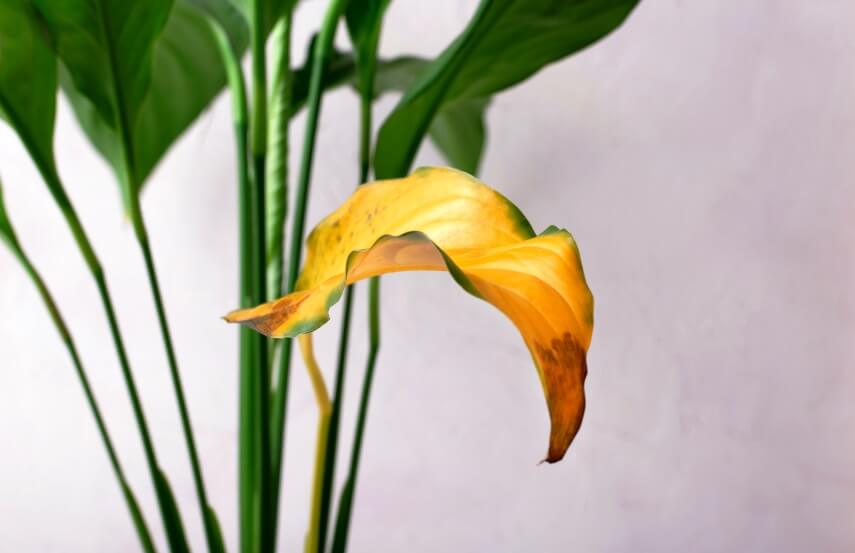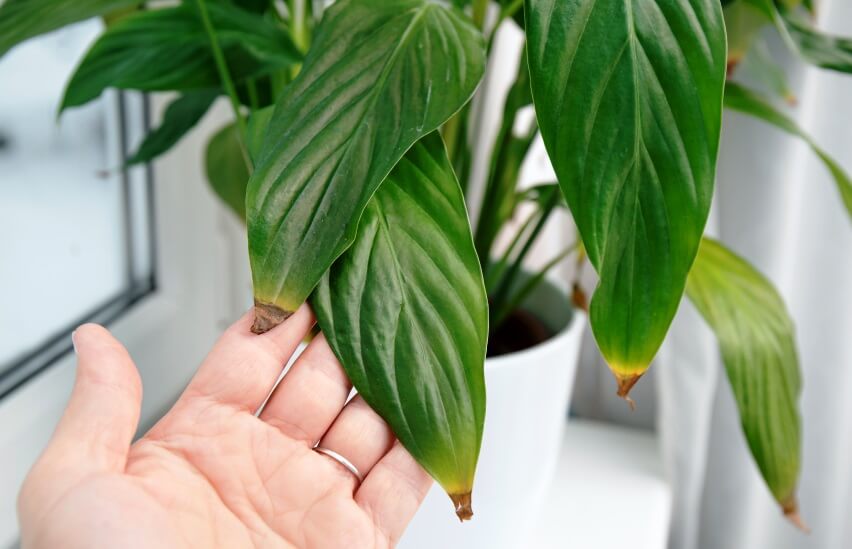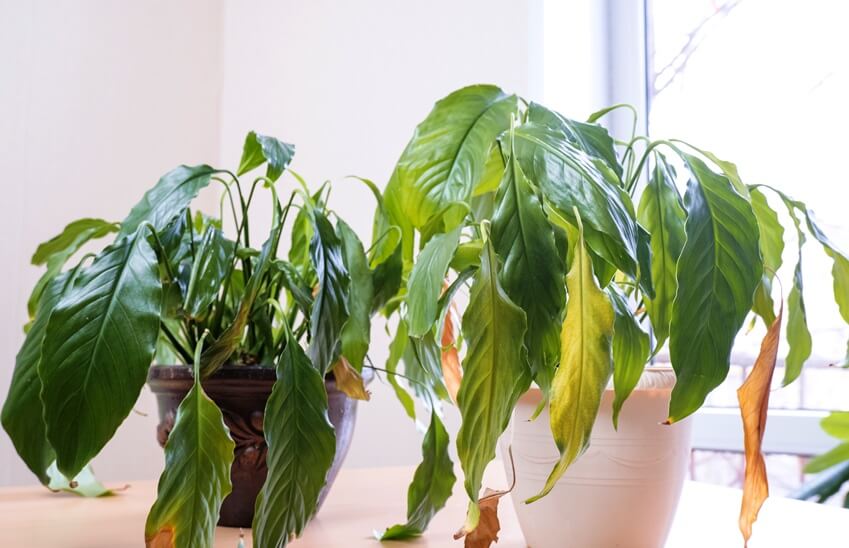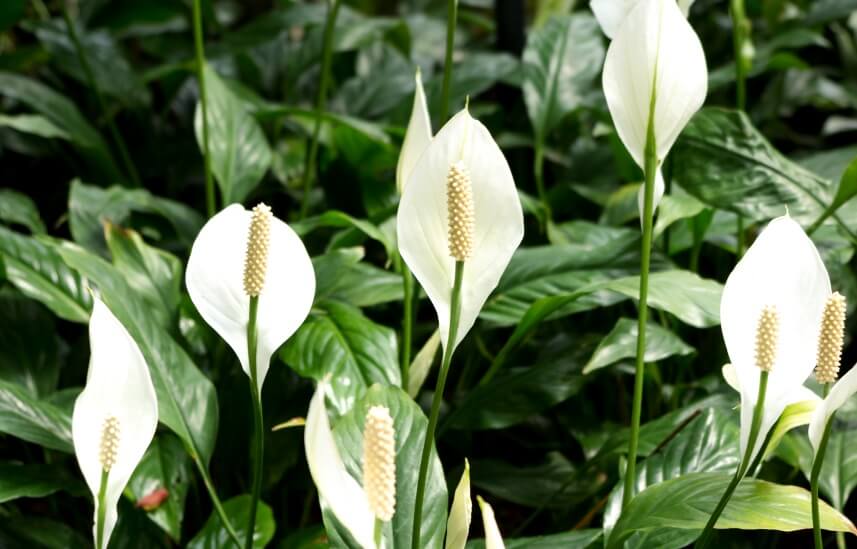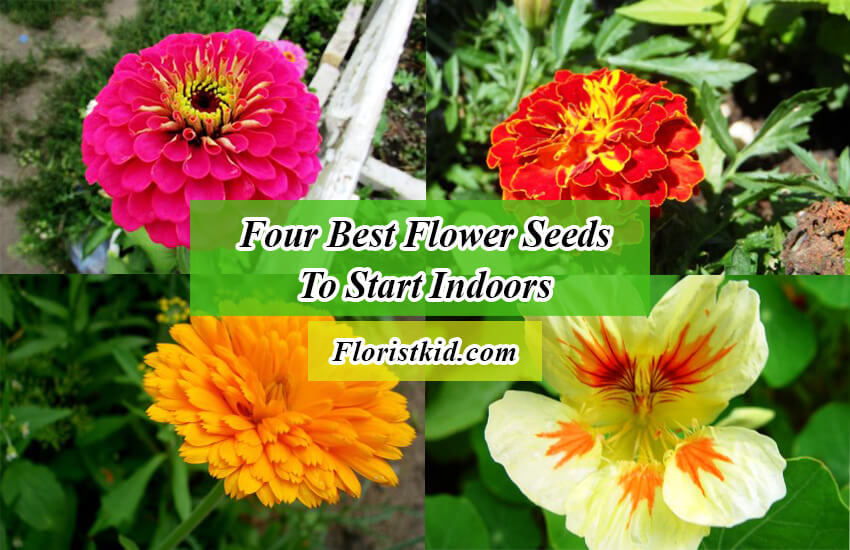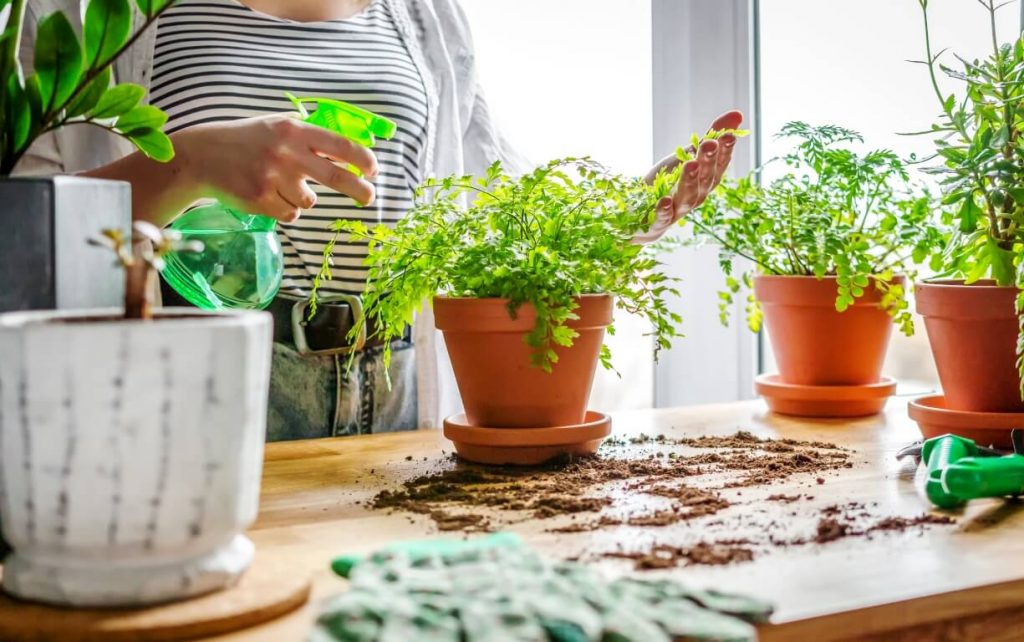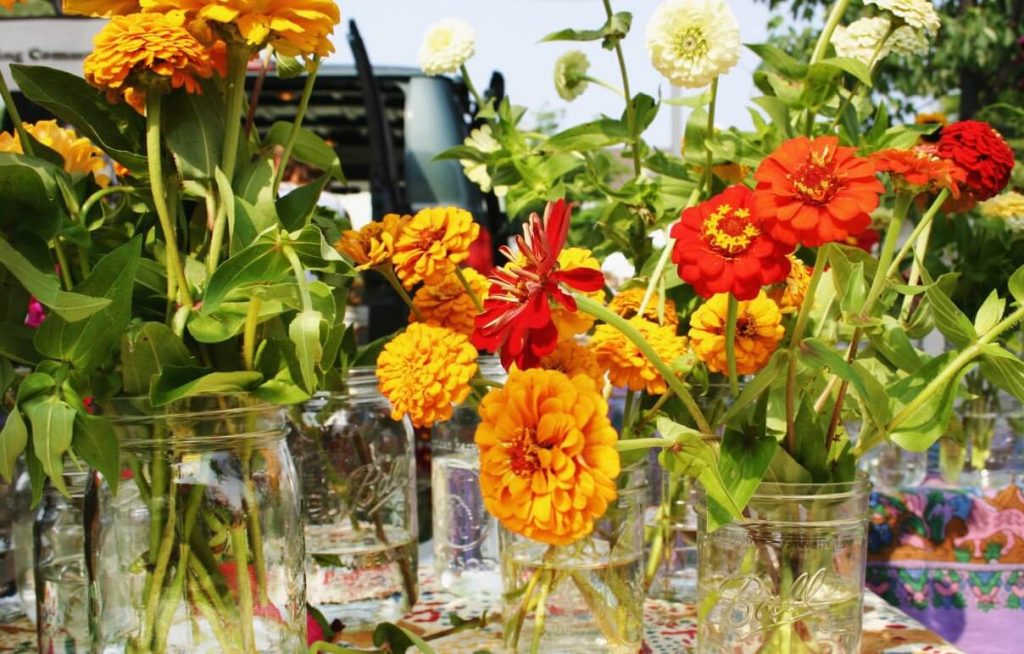Growing peace lilies, also known as Spathiphyllum, can be truly fulfilling. The glossy leaves are a welcome addition to your home all year long, and the flowers are so pleasing to watch when they rise above the foliage. However, to enjoy peace lilies’ beauty, you need to keep them healthy. A key factor impacting the peace lily’s health is the watering frequency.
So, the main question is:” how often to water peace lily?” This article will help you ensure your peace lily receives the proper water. It will discuss how often and how much water your beautiful peace lily needs.
If you are interested in this topic, you can also read
<< How Often To Water Fiddle Leaf Fig?>> and <<How Often To Water Poinsettia?>> articles.
When And How Often To Water Peace Lily Indoors?
Several factors, including the size of the plant, potting mix, the pot, and the humidity level in your home, will determine how often you need to water the peace lily plant.
Generally, the peace lily plant is better to be watered twice weekly. In a humid climate, it may do well with watering only once weekly.
However, monitoring soil moisture and watering when the soil becomes dry is the best method for deciding how often to water your peace lily. To understand the soil moisture pattern of your potted peace lily, check it with your fingers every day. Soil moisture can also be measured with a moisture meter.
How Often To Water A Peace Lily In Winter?
Peace lilies can thrive throughout the winter. However, because of the shorter days and weaker sunshine, growth slows, and flowering ceases during this season. Soil and leaf moisture are less likely to evaporate as the temperatures are lower in winter. As a result, peace lily should be watered less frequently in winter than in summer to prevent over-watering.
Once every two weeks during the winter, or whenever the top two-three inches of soil feels dry, is a reasonable rule of thumb for watering your peace lily in winter. Check the moisture level with your finger or a moisture meter before you water again.
How Often To Water Peace Lily In Summer?
Peace lilies do best in weather that is neither hot nor cold. They thrive in a daytime temperature range of roughly 65–80°F (18–26 °C). Additionally, they prefer sitting in a partial shade over the drying heat of the sun.
Peace lilies require more frequent watering during the summer because of more water loss when temperatures routinely exceed 80°F.
Warm weather causes water to evaporate more quickly from plants’ leaves, speeding up transpiration. A peace lily often requires watering every other day to recover lost moisture during the summer.
Symptoms Of Over-Watering And Under-Watering
Over-Watering
The first sign to watch out for is the withering or curled leaves with browning of the hue. Monitoring for wilting is crucial since browning can resemble the crispy, dried-out brown leaf of an underwatered plant. In fact, the leaf tips are capable of drying out and turning black. To identify overwatering, look for this discoloration along with a yellow edge.
Small water blisters on the leaves and indications of leaf edema may appear if you continue over-watering your peace lilies. A Peace Lily’s roots begin to struggle if it is overwatered for an extended period of time, and additional symptoms like root rot quickly arise, and the soil will begin to smell rotten.
Under-Watering
You can’t rely on one or two symptoms to determine if your peace lily is overwatered or underwatered because the symptoms of both conditions might overlap somewhat, especially with wilting and discoloration. The most crucial factor to consider is whether your observed symptoms coexist with dry or moist soil. Wilting in a plant with wet soil indicates overwatering, while such signs with dry soil indicate underwatering.
Drooping foliage combined with dry soil is a definite symptom of underwatering, much like the “wilt plus wet” indicating overwatering. When you water an under-watered plant, it should immediately revive.
An underwatered peace lily may exhibit a dried-out texture and yellowing or browning of the leaves. But if there aren’t any dry patches of soil nearby and brown, crispy places on the leaves, this can be a sign of sunscald, which happens when a plant’s foliage is burned by too much direct sunlight.
Tips For Watering Peace Lily
Let’s talk about the effective ways to water your peace lily so that you understand how often to water peace lily indoors.
Make Sure Your Peace Lily Gets Clean Water
The chlorine and fluoride in most municipal water supplies may harm your peace lily. Using a water quality test kit, you can determine if tap water is safe to drink.
If you have access to distilled water or rainfall, use it instead. If you don’t have access to filtered or bottled water, you can use tap water instead, but you should wait at least 24 hours before watering your plant.
Hydrate The Soil Instead Of Watering The Leaves
Remember to constantly water your peace lily’s soil, not the leaves. This is because the leaves are inefficient water sponges compared to the roots. Also, fungal infections can spread more easily on damp leaves.
Use A Long neck Watering Can
You can water the roots of a plant without getting the leaves wet by using a long neck Watering Can.
Make Sure the Water Freely Flow Out
Make sure the bottom of the pot has a hole so the water may drain freely. If the roots sit in water, root rot may occur. Use a container with drainage holes and potting soil that drains effectively to avoid waterlogging. Adding perlite, sand, or gravel can enhance the drainage of the potting mix.
Use Self-watering Pots
Use a self-watering pot to eliminate the need for manual watering of your peace lily. The soil in these containers is supplied with water from a reservoir that is slowly released as needed. This alleviates the dual concerns of overwatering and underwatering your plant.
Final Thoughts
The process of watering a peace lily is simple. A well-watered peace lily will live for years and provide a unique charm to your home or office if you remember how often to water your peace lily indoors.
To sum up, ensure the soil is damp but not soggy, and give the top inch a chance to dry out between waterings. Feel free to share your experiences and problems in the comments section below. We always appreciate getting feedback from our readers.




